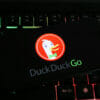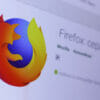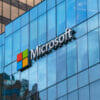As a website owner, and even as a standard web user, understanding the error code that appears for a webpage is useful to know and will help you understand whether 1) you can view that page in future and 2) how it needs to be fixed, if you are the owner of the website. There are a lot of errors that could appear. Therefore, without further ado, here is the complete list, in numerical order.
- HTTP 200 – This is code for when a request is sent and the content is transmitted back from the server. It is a successful code to have that generally won’t ever be shown in web browsers (since it is only the errors that web browsers feel the need to show).
- HTTP 404 – The 404 error is probably the most notorious error to appear on the internet and is known for being the ‘not found’ error. With a 404 error, the connection from the web browser to the website server was successful. However, the page that was being requested from the server is simply not there, hence the ‘not found’ status for the 404 error.
- HTTP 500 – A 500 error occurs when the web browser of the web user sends a valid request to a website’s server. However, the website’s server was unable to process the request, either due to being out of memory, server overload or having some sort of other internal problem.
- HTTP 503 – A 503 error is a similar error to the 500 error, which appears when the server cannot process the request from the web user (client). However, the reason for not being able to process the request is a little different, since 503s are used to indicate to the website owner of expected failures, such reaching a maximum amount of server usage that has internally been set by the website owner. For this reason, 500 errors are far more common than 503 errors.
- HTTP 301. A 301 does not directly appear in a web browser, since it is a redirection, known as a HTTP redirect. Upon landing onto a certain URL, the URL is redirected to a different URL which contains the permanently moved content.
- HTTP 302. A 302 is exactly the same as a 301 except that it is only used for temporary redirect of addresses rather than permanent. 302s are mainly used for website maintenance for this reason.
- HTTP 400 – A 400, known as a ‘Bad Request’, is when the server sends the content to the web user’s web browser. However, due to an error in receiving data from the server or a technical glitch involving the web user’s browser or internet connection, the data sent is corrupted and cannot be shown.
- HTTP 401 – A 401 error is when the content on the server cannot be accessed, because of the website owner having revoked privileges to the public from seeing such content.
- HTTP 100 – A 100 request is used to specifically send large requests from the server. By sending a 100 first, the server prepares for a large follow-up request. This takes advantage of optimizing the bandwidth of data to and from the server.
- HTTP 204 – A 204 will appear when there is no content with the request (so that the only information sent from the server is the header information of the website).
- HTTP 502 – A 502 is an network issue between the web user’s device and the server. This is generally due to errors from a network firewall or other security programs which can restrict internet/data flow.







You must be logged in to post a comment Login